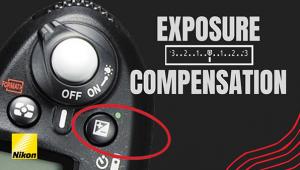Digital Help
Q&A For Digital Photography
Digital Help is designed to aid you in getting the most from your digital photography,
printing, scanning, and image creation. Each month, David Brooks provides solutions
to problems you might encounter with matters such as color calibration and management,
digital printer and scanner settings, and working with digital photographic
images with many different kinds of cameras and software. All questions sent
to him will be answered with the most appropriate information he can access
and provide. However, not all questions and answers will appear in this department.
Readers can send questions to David Brooks addressed to Shutterbug magazine,
through the Shutterbug website (www.shutterbug.com),
directly via e-mail to: editorial@shutterbug.com
or fotografx@mindspring.com
or by US Mail to: David Brooks, PO Box 2830, Lompoc, CA 93438.
--George Schaub
The Filters As Lens Protectors Controversy Continues
I had my own photo/camera store and sold many UV/skylight filters. Most of the
reasons were to help keep the lens clean and to help protect the lens in case
the camera is dropped. In my many years of selling I had only heard of one incident
of a camera being dropped where the protective filter did not save the lens,
and this was fairly severe as the lens screwmount and camera were damaged. I
had not believed the filter would or could save the camera lens from damage
if dropped until I experienced this accident myself. I was shooting in Las Vegas
and in a hurry to change cameras. I did not notice my camera bag was sitting
on the edge of a stone wall, ready to fall. The bag went over and dropped about
4 ft unto the sidewalk. I saw the camera hit lens first with glass flying. My
heart sank with visions of a lost lens or camera.
I picked up the camera and examined the damage. The filter was completely smashed
and I could not see if the lens was damaged. The focusing still worked and the
lens could be removed from the camera. The camera lens was not damaged! The
lens mounting screw was not even bent. I could hardly believe it! I replaced
the filter and to this day I still use
this lens.
While selling a filter to help protect the camera lens may be considered a ploy,
I am a firm believer that it does work. Why take a chance when a filter has
such low-cost insurance?
Edmund Clark
Thank you for sending your perspective on the issue of using a filter as lens
protection. I have received numerous e-mails on this subject with opinions for
and against the practice. Some writers, like you, included experiences that
proved to the user the filter was a protection. Others had just the opposite
experience. The exception (or individual anecdote) does not prove the rule, either way.
I based my opinion in part on over 50 years of photography, sometimes working
with cameras almost every day, which of course involved quite a few mishaps.
My opinion is also based on what the camera/lens designers choose to provide
for the protection of lenses, which has evolved and improved over my 50 some
years of experience. Most reputable manufacturers have designed and constructed
lens caps for the purpose of protecting the front element when the camera is
not in immediate use. It is both my experience and confidence in the design
and manufacturer that the fitted, original lens cap of today is a superior protection
when the camera is not in actual use.
When the camera is being used, most decent lens makers either provide or make
available equally well designed lens shades, which are constructed of tough
industrial-grade plastics. These are made to absorb a good deal of force, yet
will break away, if necessary, without damaging the lens barrel.
Optically, the best lens performance is achieved if there is no interference
between the subject and the lens. An inexpensive UV/skylight filter, in that
respect, is a detriment to optical performance. And as you noted, the thin glass
of a filter shatters rather easily, and the light aluminum screw ring of a filter
is easily bent and deformed. That is not much in the way of protection compared
to a fitted manufacturer-provided lens cap, or a lens manufacturer's custom
lens shade for the lens.
It is my opinion a lot of photo enthusiasts are attracted to the idea of the
UV/skylight filter because of convenience and laziness. They can keep it on
the lens all the time and do not have to do anything to be ready to take a picture,
like remove a lens cap and install a lens shade. And if the filter is to keep
dirt from the lens, then the dirt is on the filter, which, if not cleaned would
impair optical performance even more.
Sorry, my position here is to encourage best practices, and discourage the easy
way for people who care too little to really think about the consequences of
their choices.
Buying Print Services That Work For Framing
Q. I am having extreme trouble with printing images. I have tried a few online
print sites and the paper is always quite thin, so when the image is framed,
it sometimes ripples in the frame and looks awful!
Where can I get images printed onto thick or extremely good "unrippled"
paper which can be framed?
Nigel Crick
A. I would assume you are making prints from digital photographic
files. If you want to obtain prints of a quality worth framing, I would suggest
working with professional photographic labs, a number of which advertise in
Shutterbug. One that I have used for many years in Los Angeles is A&I, and
their website URL is: www.aandi.com/digital.html.
For the nicest prints for framing you might want to consider "giclee"
prints, but they are about twice as expensive as other print methods. Also,
most pro labs can mount your prints on foamcore board or, for even better durability,
GatorBoard, which will resolve the flatness problem.
On The Go Storage For Downloading Digital Camera Files
Q. I am thinking about purchasing a digital storage device such as the Epson
P2000. I generally shoot in raw format with a Nikon D1X and a Leica Digilux
2. I will generally fill up 2-3 512MB cards and would like the flexibility of
downloading the images to a portable device. My questions are: Is 40MB enough
or should I buy the P4000, which is double the memory size? Epson states that
raw will be read from certain cameras. Will the P2000 read both the Nikon and
Leica? I like the size of the screen. I am open to suggestions, especially from
you.
P. Merola
A. There are quite a number of temporary portable storage
drives available in the marketplace. I found the Epson P2000/P4000 exceptionally
efficient and easy to use, as the control interface is well designed. But the
unique attraction of the Epson is the very large and superior image quality
of its LCD playback screen.
I would assume both the Leica and Nikon cameras are popular, so their raw format
is likely supported, but Epson does not list all the cameras it supports. So
I guess you would just have to take a couple of CompactFlash cards to a store
that has a new P2000 to find out for sure.
The P2000's 40GB of storage would allow downloading 80 full 512MB CompactFlash
cards. For temporary storage that is a lot of images. It is expected the files
will be transferred to a computer for more permanent storage, which is advisable.
There Are No More Pro Graphic CRT Monitors, So Which LCD Display?
Q. I have been reading many of the posts on Shutterbug's Forums (www.shutterbug.com)
regarding LCD vs. CRT.
My 17" Trinitron is in need of replacement and, like you, weight is a
factor as we get older.
I have seen information on the LaCie 319, and it indicates it is a graphic/photographer-quality
LCD. I have not seen any posts regarding this monitor for photo-editing use.
Any advice on this unit? Your insight would be greatly appreciated.
Tim Clifton
A. I tested and reviewed LaCie's 20.1" LCD about
a year ago. It was definitely the best at the time for doing Photoshop work.
So, I would be quite confident this newer 19" 319 should also provide
good quality performance.
Another LCD monitor that was just lowered in price that is very highly rated
by photographers is the Apple 20" Cinema Display. It will work equally
well with either a Mac or Windows PC that has a DVI output video card. I am
currently testing and evaluating a Samsung SyncMaster 244T. Look for my review
in an upcoming issue of Shutterbug.
- Log in or register to post comments


































